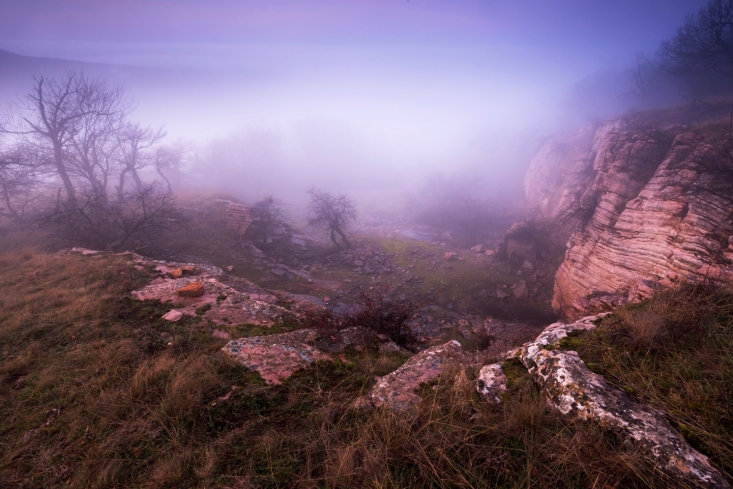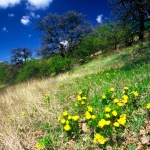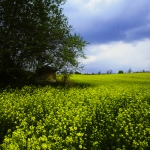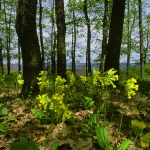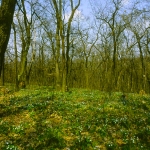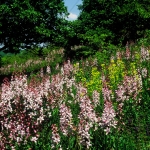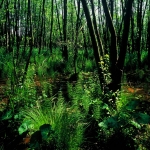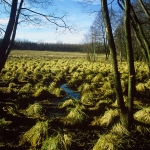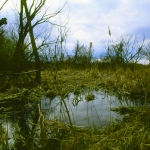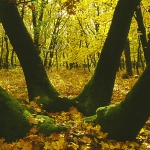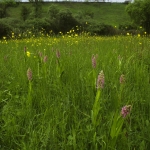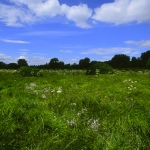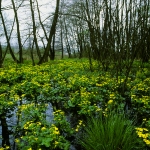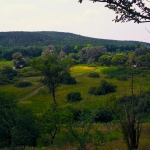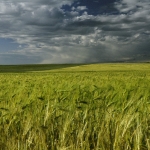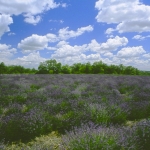The closing section of the Transdanubia Mountains to the north-east are the Dunazug mountains. This range includes the mountain Gerecse, enclosed to the north by the river Danube, to the east by the basin of Zsámbék, to the south-west the basin of Tata, while to the west, the territory of Kisalföld (the “small flatlands”).
The three main sections of the Gerecse are:- Western Gerecse
- Middle Gerecse
- Eastern Gerecse.
The Protected Landscape Area of Gerecse was established in 1977. For the most part, the protection zone covers the Middle Gerecse, while, by way of continuous expansion, the most precious territories of the Eastern Gerecse have recently been brought under protection as well.
The near-surface construct of the Gerecse is dominated by Trias limestone. In addition to this, however, Jurassic limestone, extremely rich in fossils, is present in considerable volumes. This is the stone that reserved one of the major fossil findings of the past years, reaching in significance well beyond the boundaries of Hungary, an archaean crocodile. Beside these remnants preserved from the “middle ages” of the Earth’s history, remarkable values, especially as regards plant fossils, have been conserved in the freshwater limestone that originated in the pleistocene age of the Quaternary.
Due to the geological structure as described above, these mountains enclose numerous caverns of diverse lengths, nearly 300 of which have been developed to date. Some of these caverns are unparalleled sites for archaeology and palaeontology research, often housing rare species of bats and large bat colonies.
The flora of the Gerecse is less varied than those of the neighbouring Pilis or Vértes, on account of its peculiar geological structure. The most frequent and most expansive groupings in this mountain are oak and wooly oak forests which are normally attracted to chalky surfaces, as well as, in higher altitudes, the beech groups. Besides, other major features of the peculiar Gerecse flora include the forests of the debris slopes, the Karst forests of mahaleb, the Sub-mediterranean heath slopes as well as the open limestone grass grounds.
Tracking the passages of this mountain, several peculiar plant species may be traced, such as the yellow houseleek, the Hungarian doronicum, the striped saw-wort, the martagon lily or Turk's-cap, or the pretty needlegrass. A unique species, enjoying especial protection, is the Hungarian cudgel.
As for the fauna of the Gerecse territory, the richness of the bat and bird species is truly remarkable. Among the various protected bat species, the rhinolophic bat, csonkafülű denevér, nagyfülű denevér és a pisze denevér are subject to special protection. Other characteristic mammals are found here as well, such as the great graphiure and the filbert mouse, the otter, the catamountain and the badger.
Special protection has been granted, furthermore, among the birds habitual in the area, to the black kite, the békászó eagle, the harrier, the black stork, the barn-owl, the bee-eater, the sakeret, the secretary-bird, the lich-owl, the imperial eagle and the goldfinch, as well as the grey laughing-bird and the collared flycatcher.
Among amphibians and reptiles, the territory houses the green tree-frog, the brown toad, the forest frog, as well as colubridae of the forest, copper colubride, viviparous, the green and fragile species.
The presence of man can be traced back to the very beginnings of the human race. A prehistoric human settlement from half a million years ago was excavated in Vértesszőlős, a world-wide archaeological rarity. The Avar motte of the Small Gerecse, as well as the castle hill of Neszmély are considered as unique cultural assets. The famous battle of Marót, right after the sad defeat at Mohács, took place in Pusztamarót. In this battle, Mihály Dobozi and his wife were both among the Hungarians fleeing the overpowering Turkish troops on horseback. The horse of the couple, however, was injured during the escape. The woman at once understood that both of them would not be saved, and asked her husband to kill her. Having complied with the request and taken the life of his wife, Dobozy got killed in the battle with the Turks. The battle of Marót is kept alive in the memory of Hungarians by the famous painting of Bertalan Székely. In the centre of the village, a mediaeval settlement, Kovácsi is being currently excavated. A church from the era of the Árpád dynasty, the adjoining graveyard and a nobleman’s mansion from a later date are on display here. Among the castles of the area, those in Bajna, Bikolpuszta deserve special attention, as well as the Serédi castle in the Small Gerecse.
In Agostyán, an arboretum rich in exotic species welcomes visitors. At the outskirts of this village, the regional Natural Protection and Human Ecology Training Centre has been established. This centre was founded with the objective of studying the relationship of man and nature, and investigate ways of returning to the once harmonious co-existence of the two. The foundation operating this training centre organises regular training courses for teachers, “forest school” programmes, as well as discovery and lifestyle camps.
Some parts of the Natural Protection Area of Gerecse enjoy special protection, such as Pisznice, Száz-völgy (including a forest reservation area), Nagy-Somlyó, Asszony-hegy, and the Lábas-hegy in the village of Baj. These may be visited with special permission and with guides only, while the rest of the territory is open to visitors along the designated touring routes.
Recommended tracking route
The route of the tour “Gerecse 50” leads across the loveliest sites in the mountains. This is the recommended route to take, although it may prove to be somewhat too long at one go, yet section by section it is worth the try for everyone.
We start out from Tatabánya, following the red dot orientation signs. Having passed the János spring and crossed the beech-grove of unparalleled beauty at Vaskapu, we’ll arrive at a short section of the path marked with a red cross sign. As we reach the end of this section, we’ll follow a short passage of the red tourist sing and then the yellow sign all the way to Tardos. From here, we’ll walk along the blue cross sign – following the route of the national Blue Tour – and arrive first at the Serédi castle of the Small Gerecse, then in Pusztamarót. Continuing our way along the red sign, the next stop is the village of Héreg, then, following the green sign, we’ll be standing at the feet of the extremely steep Bányahegy hill. Having completed this section, we’ll walk along the route of the national Blue Tour to the end station of our tour, the Kő-hegy above Tatabánya, where we’ll also have a chance to admire the largest sculpted bird of Central Europe, the totem bird of the ancient Hungarian tribes, the so-called Turul.
